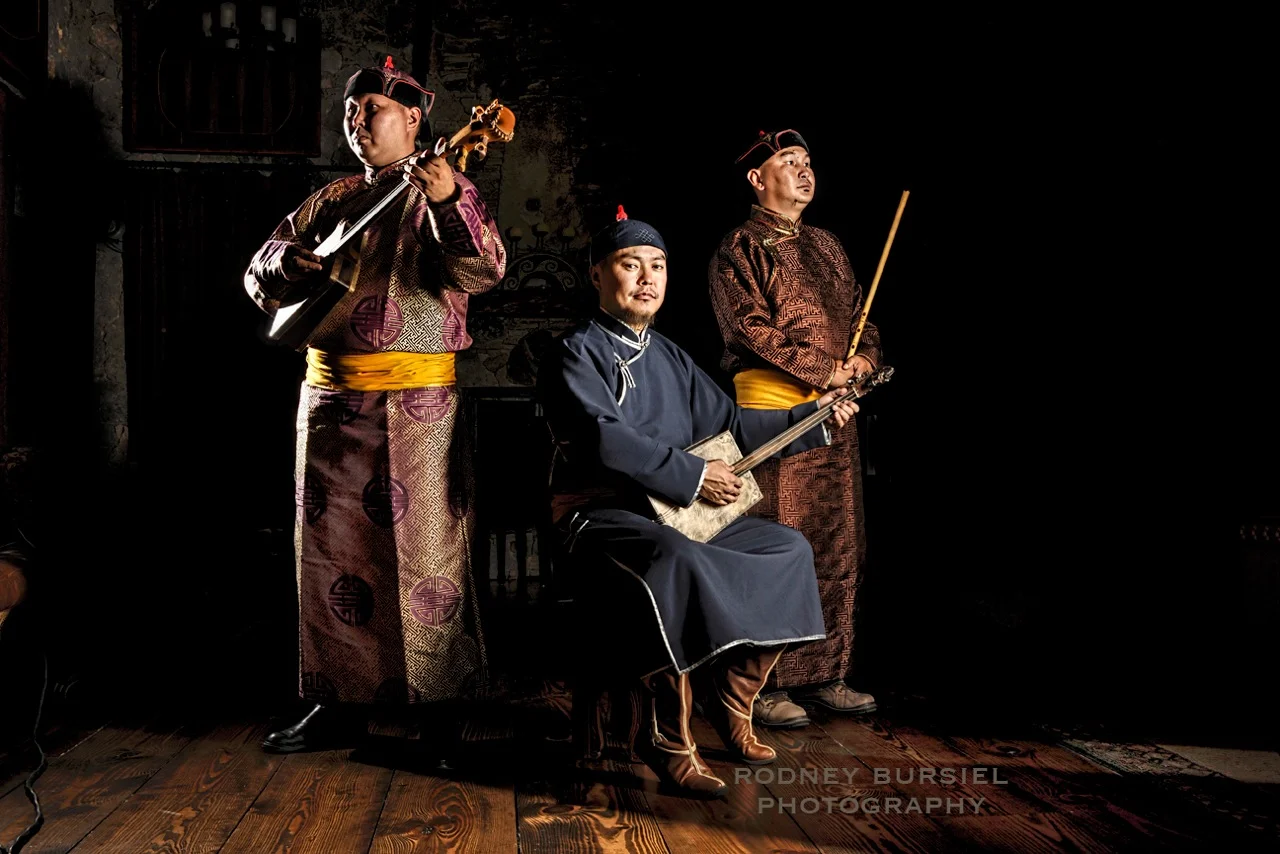Traditional Tuva Music Resonates in Santa Monica
Rooted in Buddhism and the beliefs of the indigenous shaman of Tuva, Alash performed to a sold out crowd at The Broad Stage in Santa Monica, Friday, March 8. Audience members were transported to a healing, spiritual realm of the "Forest People" of Tuva.
Tuva, a federal subject of Russia (also known as a Russian state), is located in the Southern region of Siberia, bordering Mongolia and China. Originally cattle-herding nomadic tribes, the Tuvans have continued to use their indigenous instruments and uniquely enhanced vocal overtones to sing to spirits for health, healing, positive elements, and abundance. Many of the songs, like the traditional instruments that accompany them, have been passed down through thousands of years and multiple generations of people. Alash recently came to America and blessed us with their presence and flawless performance.
Although Western Music has a focus on harmony, melody, and rhythm - from Africa, whereas Asian music has a focus on timbre - with subtle variances in overtones, vibration, and dissonant frequencies.
Musicians Bady-Dorzhu Ondar, Ayan-Ool Sam, and Ayan Shirizhik, all studied at Kyzyl Arts College, located in Russia, where they each received awards and gained recognition for throat singing before eventually forming Alash. Since forming their band and beginning to tour worldwide, Alash has toured with American bands such as Bela Fleck & The Flecktones, The Sun Ra Arkestra, and in 2008 they won a Grammy.
Alash sings in the Khoomei — a style of throat singing, which is known to be a softer. Producing the root-note while also producing an octave below and one or two octaves above the root note.
Essentially, one vocalist sounds like three or four singers, and three throat-singers sound like a choir of nine to twelve people.
Awe inspiring to say the least.
As amazing as this actually might sound, singing is not the only instrument where the Tuva use overtones to produce their musical stories.
Just as there are many personalities and various body types, there are also multiple instruments used to penetrate the varying levels of chaos within our minds, into a universal stillness of barely fluctuating bliss.
Wind instruments such as flutes, string instruments similar to banjos, and rhythm instruments like shakers and drums are all used by Alash while performing their vocal acrobatics, hypnotically mesmerizing the audience into a solitary state of joy.
Tuvan shamans believe. that sound connects all of us and that vibrations can realign our minds, recalibrate our bodies, and reconnect us to our highest selves. Although there was nothing implicitly 'spiritual' in the program notes, it was obvious after the show that something had shifted. What once seemed like a claustrophobic and turbulent space, now somehow seemed transformed into a peaceful and tranquil place — breathing with life and bursting with a renewed childlike energy.
The performance flew by.
Overcome by waves of sound and visions of nature, only in hindsight did one realize that they'd been taken on a journey through the forest and mountains of Tuva, into the plains of Mongolia, the snow of Siberia, and beyond the Alash River (which the band was named after) to finally find themselves back at The Broad Stage in Santa Monica, California.
Unique performances, amazing art, and phenomenal artists like these can be found every week in Santa Monica at The Broad Stage.





